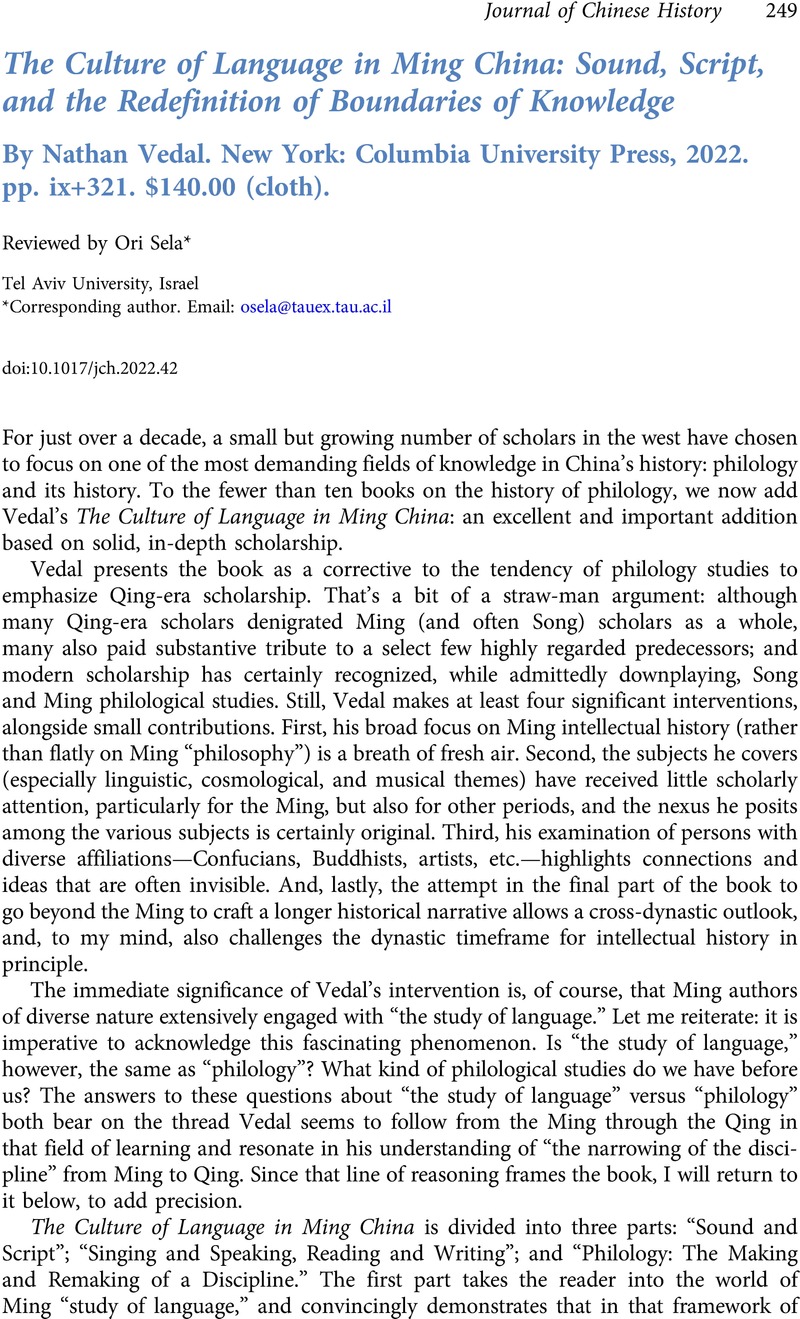Crossref Citations
This article has been cited by the following publications. This list is generated based on data provided by Crossref.
Sela, Ori
2024.
Philology Strikes Back: Consolidating a Discipline in the Mid-Qing (1644–1911).
History of Humanities,
Vol. 9,
Issue. 2,
p.
401.




